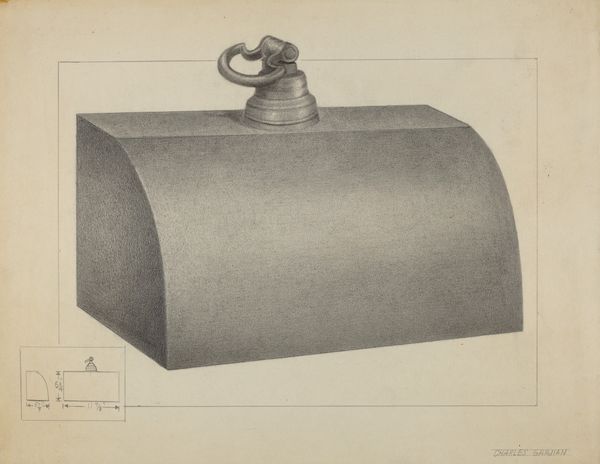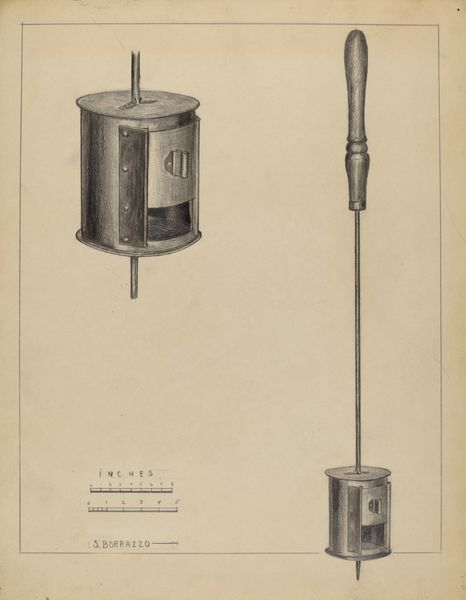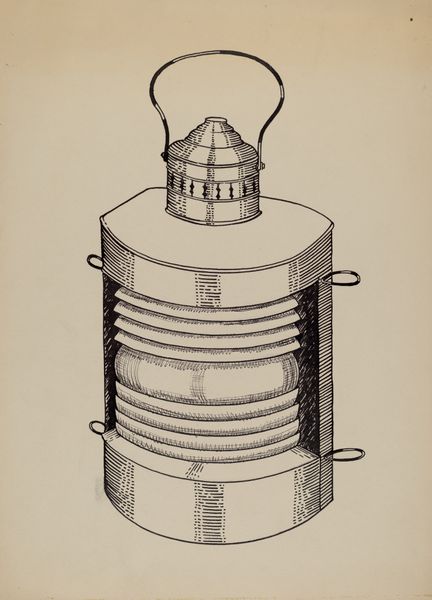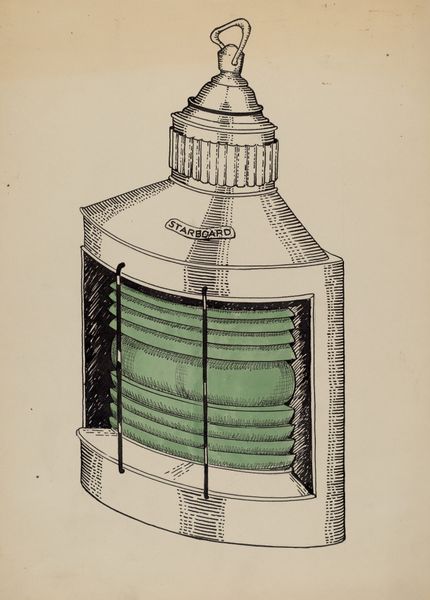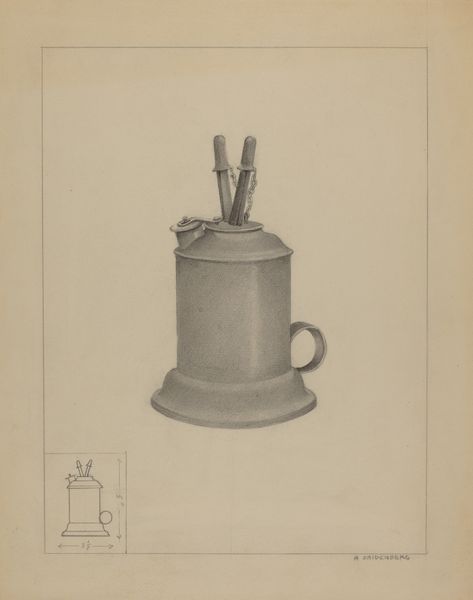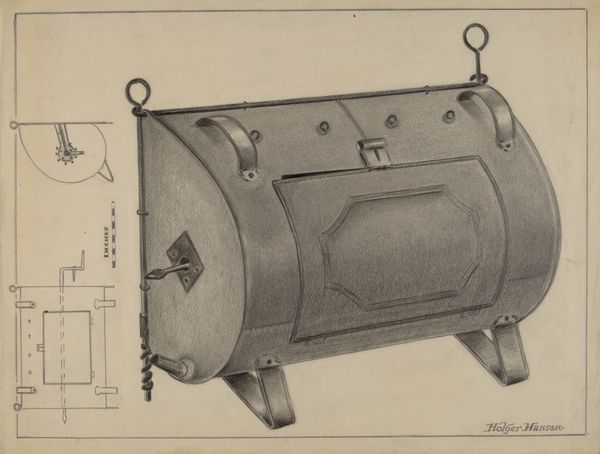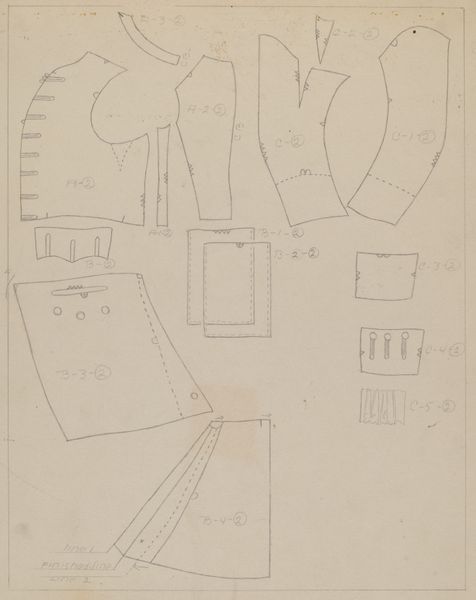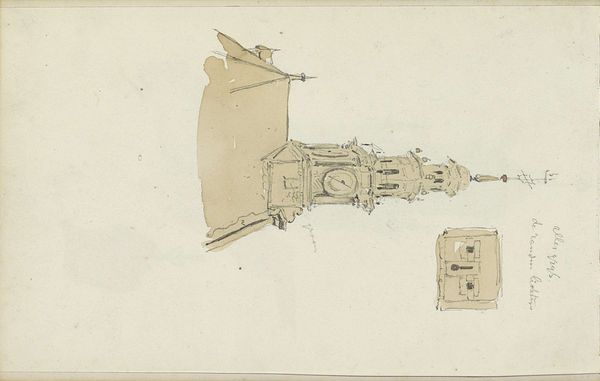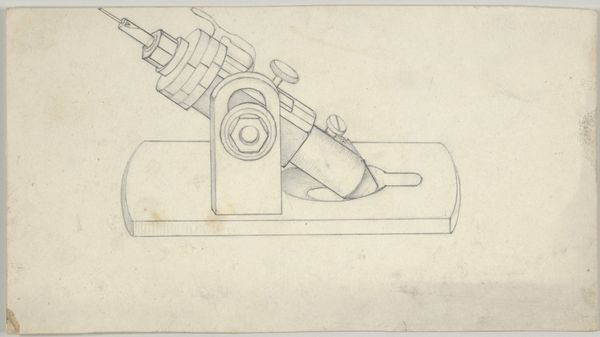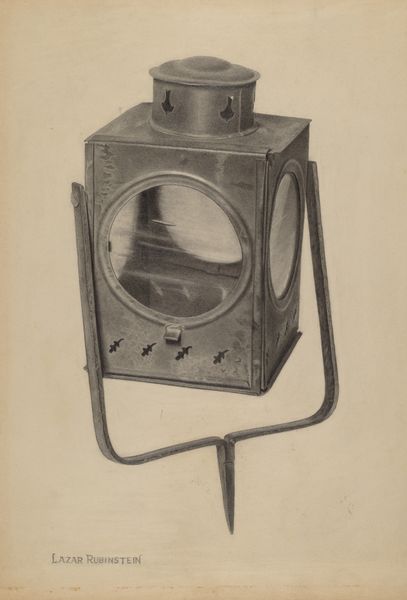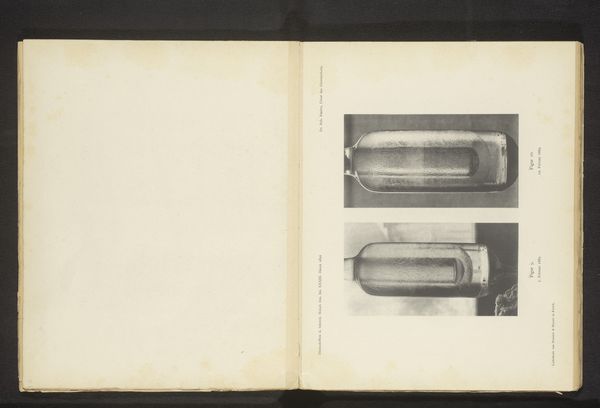
drawing, print, pen
#
drawing
#
amateur sketch
#
aged paper
#
light pencil work
# print
#
pencil sketch
#
old engraving style
#
hand drawn type
#
personal sketchbook
#
idea generation sketch
#
sketchbook drawing
#
pen
#
shading experimentation
#
modernism
Dimensions: height 89 mm, width 69 mm
Copyright: Rijks Museum: Open Domain
Curator: Here we have an unusual item from the Rijksmuseum's collection: a technical drawing entitled "Doorsnede van een batterij," or "Cross-section of a Battery." It's attributed to Isaac Weissenbruch and likely dates between 1836 and 1912, judging from his active years. Editor: You know, before you said 'battery,' my mind conjured some kind of elegant, tiered dessert, like a steampunk eclair! There's a quietness to it, though—a restrained energy that makes it strangely appealing. The aged paper lends this lovely old drawing a quiet, personal air. Curator: That’s an interesting point. Despite the subject matter being rather… scientific, there's a clear artistic hand at work. It seems like more than a straightforward diagram. The rendering feels a bit more nuanced than purely utilitarian. The labels themselves almost read as ornamentation. Editor: Right? And it almost feels like seeing inside the artist's brain—an idea generation sketch like an early concept model. Notice the careful shading. Someone was exploring more than just technical aspects here. They were chasing something...almost feeling their way through light and shadow. What do the symbols convey, would you say? The pluses and minuses, the A, B, C, Ds? Curator: Well, beyond their obvious denotation within the battery schematic, consider what the battery itself came to represent: readily available energy, potential, and unseen power. The careful annotations almost underscore that feeling of hidden, carefully controlled forces within something so unassuming. One can see, too, how it is laid out almost architecturally, calling attention to the positive and negative "foundations." Editor: That makes me think...the object's almost totemic in this form, right? More than a battery, this has morphed into an abstract idea of ‘potential.' Seeing a hand-drawn technical schematic—which could have been simply facts on a page—it gains this curious emotive weight by virtue of existing as art. It's wonderful. Curator: Yes, it seems to bridge art and scientific inquiry. Thank you for sharing that thought. Editor: Of course! Thanks for offering that helpful context!
Comments
No comments
Be the first to comment and join the conversation on the ultimate creative platform.
